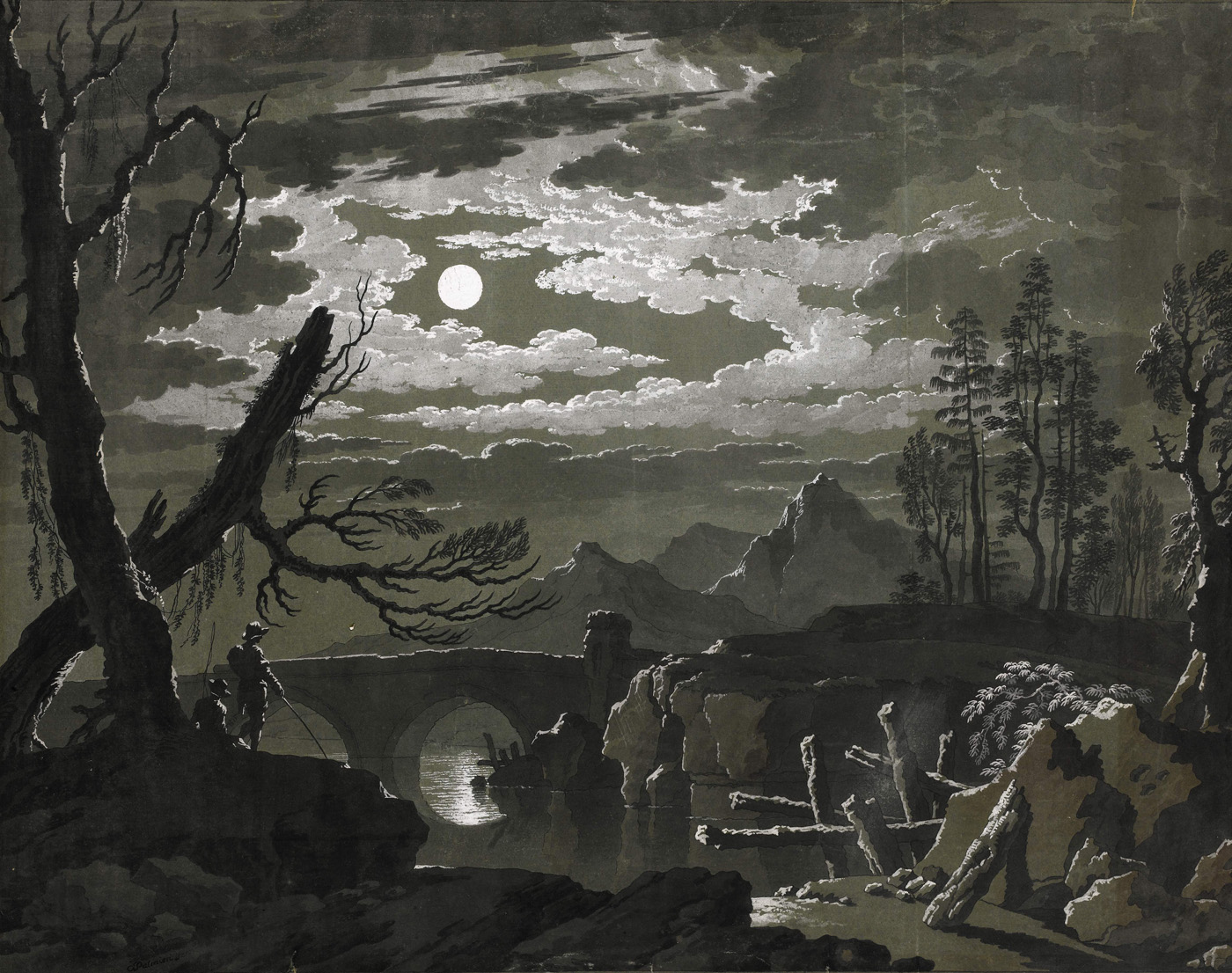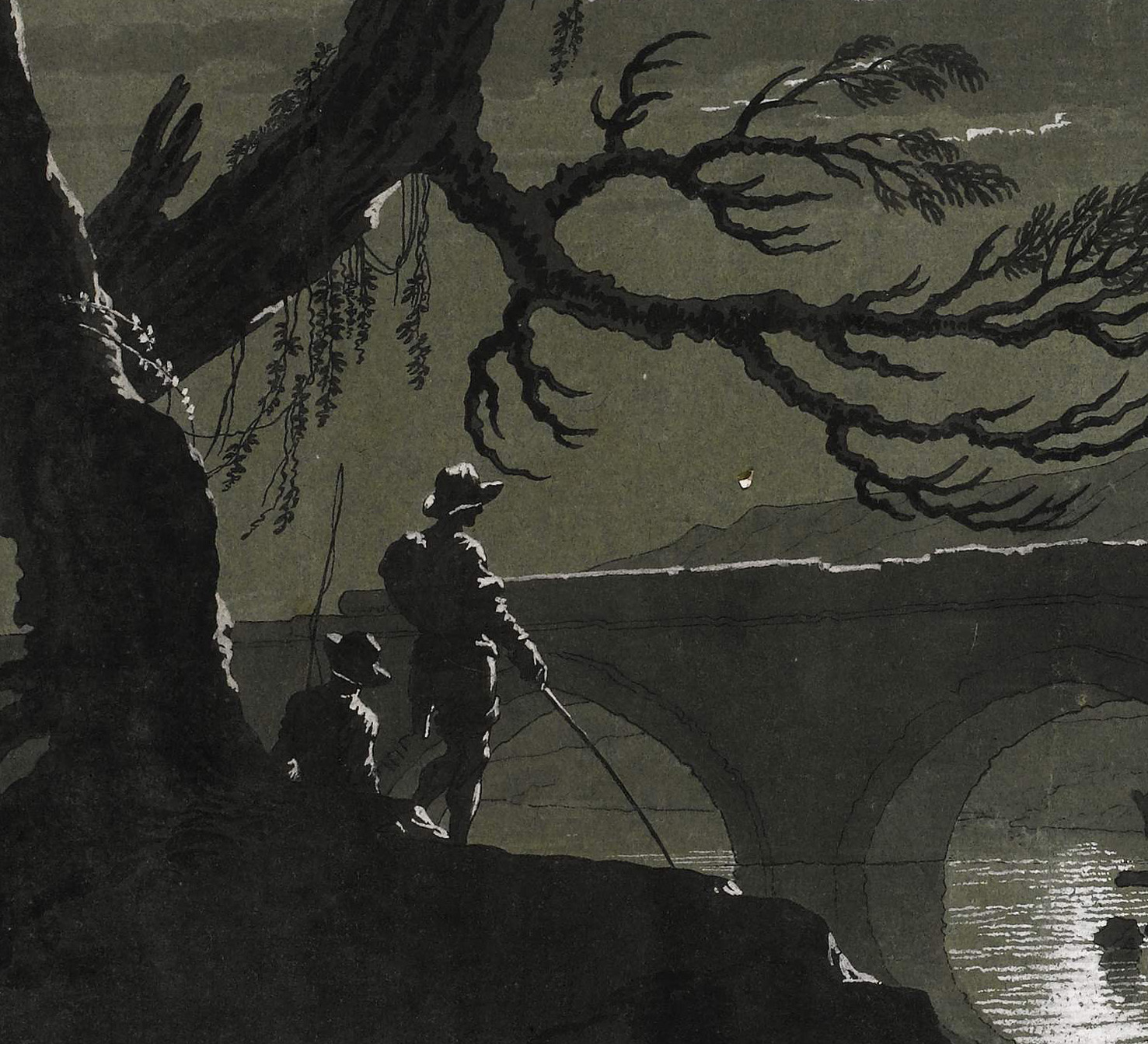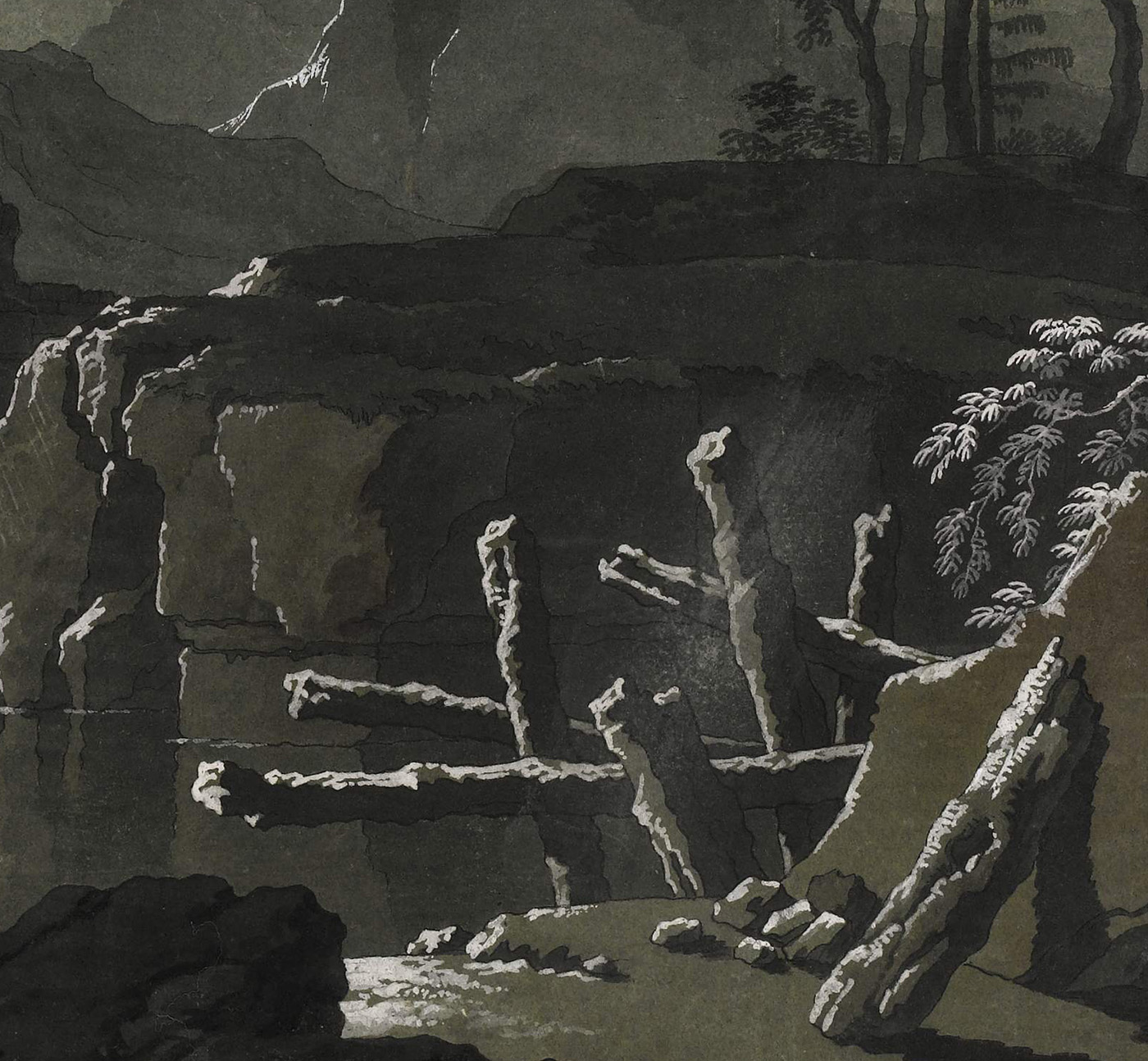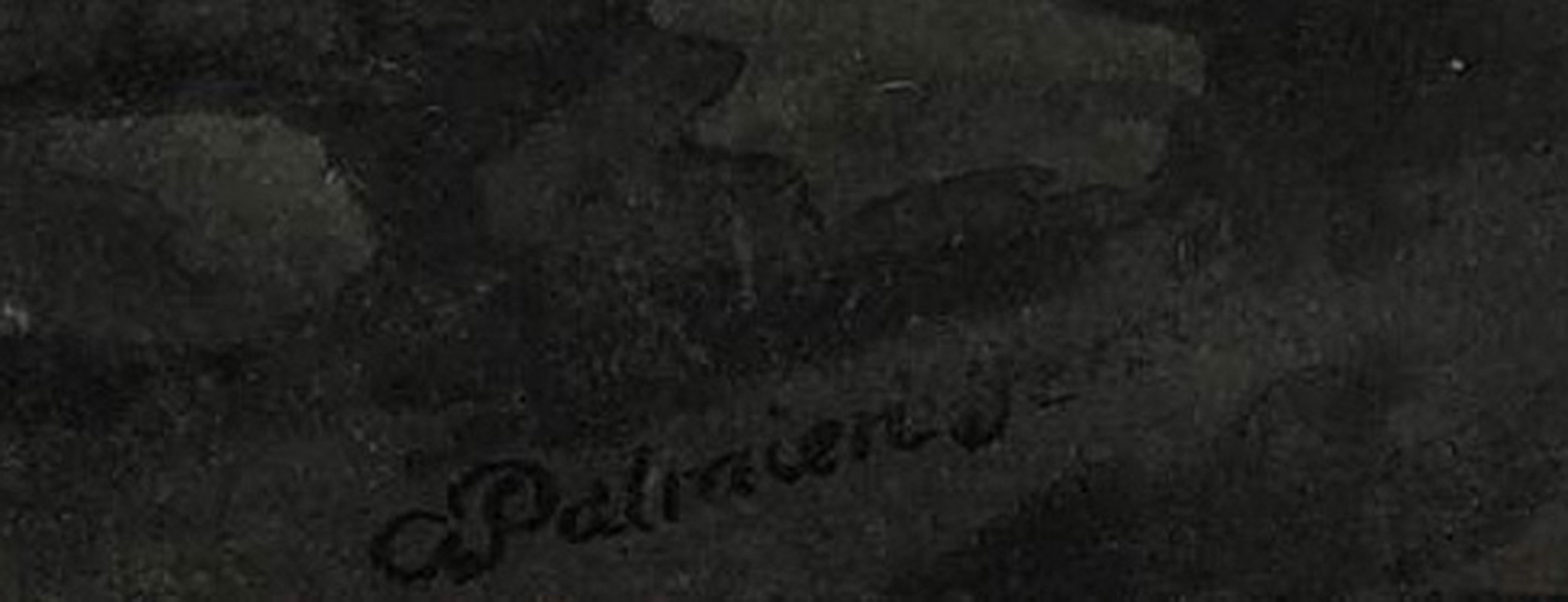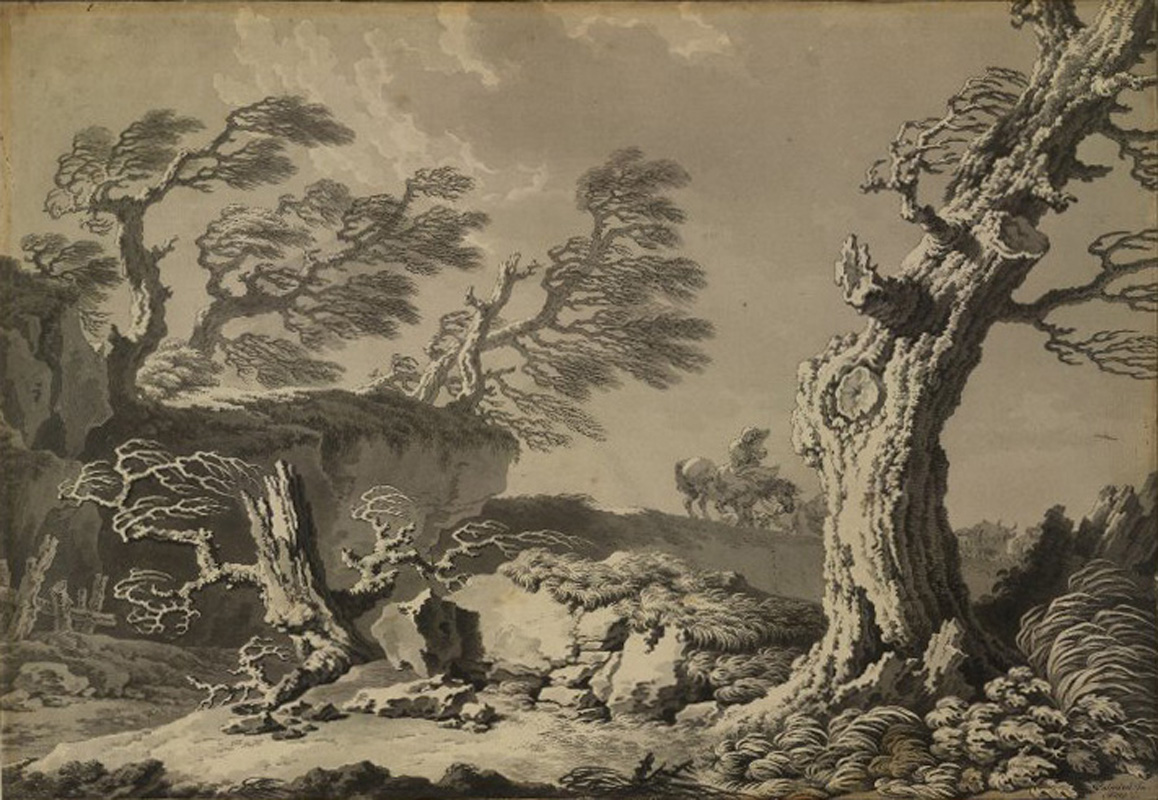PIETRO GIACOMO PALMIERI (Bologna 1737 – 1804 Turin)
Pietro Giacomo Palmieri (Bologna 1737 – 1804 Turin)
A Moonlit Landscape with Fishermen
Pen and black ink, black and grey wash, heightened with white, over traces of black chalk, on paper prepared green-grey, 475 x 610 mm (18.7 x 24 inch)
Signed ‘G. Palmieri f’ (lower left)
Provenance
Private collection, Germany
***
Pietro Giacomo Palmieri was born in Bologna, and became a pupil there of Ercole Graziani at the Accademia Clementina.1 He was invited to Parma by Guillaume du Tillot (1711-1774), a leading minister who was trying to make the court there a cultural centre. It was in Parma that Palmieri developed his style of landscape, for which he was later to become recognized. Palmieri lived in Paris for eight years between 1771 and 1779. In that year he moved to Turin, where he worked for the Savoy court as an advisor for the Royal collection of prints and drawings.
His works generally were strongly influenced by seventeenth-century Dutch art, Italian painters, such as Salvator Rosa (1615-1673) and particularly Guercino (1591-1666), and contemporary French works, particularly those of Claude-Joseph Vernet (1714-1789). Typically, a few rustic figures, sometimes with accompanying animals, are dotted about rugged, isolated landscapes. His earliest known works are a series of landscape prints published in 1760 as the Libro dei Paessaggi. He also produced witty trompe l’oeil drawings.2 His most impressive and original works however are the large-scale bodycolours of atmospheric landscapes, such as the present sheet.
Guercinesque landscapes by Palmieri are in the Louvre, the Uffizi and the National Gallery of Scotland.3 That such drawings were greatly admired by contemporaries in France is seen in the words of the draftsman and engraver Jean-Georges Wille, who noted in his journal of January 1775 that ‘M. Palmieri, Italien, m’a fait deux dessins, un peu dans le goût du Guerchin. Je les lui ay payés un louis pièce’.
Our dramatically lit and majestically-sized bodycolour is the largest known work by Palmieri. The influence of Vernet is clearly visible, yet the artist has imbued a flavour all his own to the work. Although it is likely to date from the late eighteenth century, it forebodes the Romanticism of the nineteenth century, made immortal by artists such as Caspar David Friedrich (1774–1840). A pair of comparable bodycolours, yet of smaller size, is preserved in the British Museum, London (see last fig.).4 Elaborate drawings such as these were highly valued by Grand Tourists visiting Italy, and were collected and displayed as works as art in their own right.
This work will be included in an article in the journal Arte Lombarda as well as in the forthcoming catalogue raisonné on the artist, both currently being prepared by Dr Chiara Travisonni.
SOLD
1. For the artist, see Vittorio Natale, Wunderkammer. Pietro Giacomo Palmieri celebre disegnatore a penna, Turin 2009 and G. Delogu, 'Pietro Giacomo Palmieri', Pantheon, 16, 1935, pp. 385-91.
2. See for instance the Trompe-l’Oeil Exercise: Prints on a Table Top, pen and brown ink, brown wash, 413 x 561 mm, in the Metropolitan Museum, New York; see Jacob Bean and William M. Griswold, 18th Century Italian Drawings in The Metropolitan Museum of Art, New York 1990, cat. no. 148, pp. 157-58, repr.
3. For the Louvre and Uffizi sheets, see Delogu, op. cit., pp. 391 and 389, and for the National Gallery of Scotland sheet, see Keith Andrews, National Gallery of Scotland: Catalogue of Italian Drawings, Cambridge 1968, I, p. 86, II, p. 106, fig. 606.
4. View of a Rocky Seashore, 366 x 527 mm, and Landscape in a Storm, 366 x 528 mm ; Department of Prints and Drawings, inv. nos. 1949,1013.1 and 1949,1013.2.
